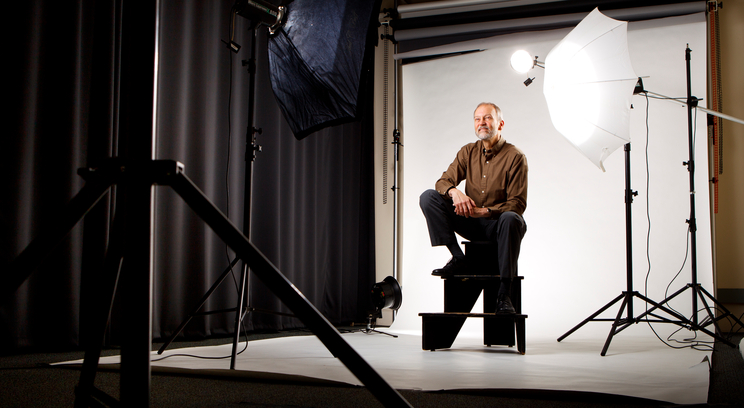The director of the annual conference reflects on the growth of diversity, the evolution of inclusion, and the hope of breaking new ground for the next 25 years.
The forum is celebrating its 25th anniversary this year. When you began working with the forum, how was diversity and inclusion (D&I) defined?
When I started in 2002, the forum – and the field – was very much about diversity and not inclusion. Representation was the main focus and the definitions of what that meant were multiplying – mental health, size, transgender and immigrants. The topic of generations in the workplace was (and still is) hot, as was the role of women, especially in leadership roles. There was also pushback about that expansion, too. We hadn’t solved race and gender issues, among other things, but were already moving on to open opportunities for many other groups of people. There certainly wasn’t talk of cultural competence or much on bias. … Somehow, it felt like we hadn’t gone much beyond compliance, but that seemed to change rather dramatically over the next few years.
What are the differences and similarities between “diversity” and “inclusion”?
Diversity is about who is at the table – it’s numbers and representation (and hopefully representation at all levels). Inclusion is about how these people are valued, how they interact with each other, what their opportunities are. It’s about engagement. Think about it this way: You recruit a person who is different from the majority of employees because you want the diversity of his or her thoughts and experiences and the creativity that this difference brings. But then you require conformity to your organizational culture. Once/if the new employee assimilates, you have lost the edge that was the reason you brought him or her in. It is a fine art to be able to balance multiple cultures within an overall organizational culture. But those organizations that master it become the best places to work and are paid back with loyalty, productivity and a creative edge.
How did the forum begin?
In 1989, Minneapolis Community College (MCC) hosted what was then called American Management Association’s (AMA) Black Managers Forum, a two-hour teleconference. The event grew over the next few years to include sponsorship by the Twin Cities Chapter of the National Black MBA Association, a panel of local experts to respond to questions immediately following the teleconference broadcast and, in 1993, a morning workshop. In 1994, the name was changed to the “Multicultural Forum.” The University of St. Thomas was granted permission to use the name and continue the event in 1997, after the AMA backed out. At the first teleconference, 75 people took part; more than 1,200 people participated in the 2012 forum.
Historically, who have been the main attendees of the forum? How have you seen this change?
When I first began, the typical forum attendee was from the Twin Cities and worked in human resources or diversity (heavy HR emphasis). We had attendees from all levels, but more managers and below, and fewer directors and above. There has been a rather dramatic shift in my 11 years. More than 50 percent of attendees are now line managers, working every conceivable function – marketing, sales, operations, finance, etc. We’ve also seen an increase in attendance from upper-level management, no matter the function – 25 percent are at the director level, with 14 percent at the vice president level and higher.
What is the impact – both on the forum and on the field – for this change in attendee profile?
In an inclusive workplace, the people not working in HR or D&I are the front line of the effort. They make the environment inclusive or not by their actions and attitudes. The fact that so many of them are attending a diversity conference means that their organizations are getting something right. … The message is out that we are more productive and more profitable if our employees are happy and engaged in their work. An inclusive workplace, where all employees understand their value because the organization treats them as valuable just as they are, is key to that engagement.
What do you see as the primary reason for this shift?
I think it is the emphasis on inclusion. D&I leaders realized that creating a diverse workforce was only the beginning of the work. In order to retain those workers and advance them into increasingly more influential positions, an environment where they could bring everything they had to offer to the table was crucial. That could only be done if they felt valued and safe, and if they were included in the conversation.
I wish I could say that increasing the number of line managers who attend the forum was fully intentional on our part because we saw the inclusion trend coming and reached out to line managers in a very purposeful way based on that! There definitely has been an outreach to members of employee resource groups and diversity councils because we were and are offering content relevant to them. Those folks are the core of inclusion efforts. But I think it was the diversity leaders in their organizations that saw what the forum was offering and determined to bring their line leaders to the conference. Organizations are now doing that even more by holding their diversity council meetings in conjunction with the forum to take advantage of the learning we offer. The same is true for the leaders of employee resource groups – they are being sent to the forum to learn from the presenters and each other.
What is it about the forum – the location, timing, format, for example – that you think most makes this a “must attend”?
I do think location is part of it. We have a very loyal following here with an amazing wealth of Fortune 100, 500 and 1000 companies in the Twin Cities that are very global in their outlook. Our location has its drawbacks, too – there are some who think of us as flyover land and all white, so what could we possibly know about diversity? We work hard to overcome that perception, and I think we’re having success in the effort. Of course, that hard work essentially means being the best at what we do, offering something that our attendees perhaps can’t get elsewhere. Practical applications and best practices brought by subject-matter experts, whether consultants or company peers, training of all our speakers so they understand adult learning principles in order to deliver the high caliber of teaching, a robust evaluation process that leads to a continuous learning process. … These are key.
This year’s conference is a great example. We’ve wanted to increase the interaction of attendees with each other, to bring them a more robust conversation and a different way of learning.
So this year, not only will the general sessions build upon each other and thoroughly align with the theme (Our Time to Lead), but attendees will be intimately involved in the discussion of leadership.
What does “Our Time to Lead” mean – to attendees, to the D&I field, to the forum?
The theme is based on several convergences and opportunities I see occurring right now. The first is an ongoing trend from the past several years: D&I practitioners are focusing their efforts on the ways they can directly or indirectly improve a company’s bottom line, and are learning to speak the language of business so they can effectively communicate that to their business leaders. D&I is not a cost center; rather, it is a revenue enhancer and maybe even a revenue generator.
The second convergence is globalization. In a globalized world, we are all dealing with unfamiliar cultures. In order to understand contracts, employment norms, or the shades of meaning in a language in another culture, business leaders need a level of cultural competence. Cultural competence dwells in the D&I space, so we have a direct role to play in furthering business interests around the world.
Finally, the downturn in the economy has led to extensive changes in businesses large and small. As things are rebuilt and reorganized as we recover, there is a unique opportunity to embed D&I processes into the restructuring.
For all these reasons, it is our time to lead. The theme was created to point that out and to challenge attendees to find their personal and collective leadership abilities and initiatives.
Does the “our” refer to the attendees, to the forum, to both?
Good question! The “our” refers to the attendee and D&I specifically. But it also refers to the forum … 25 years of leadership and looking into the future, 25 more years of leadership. While it is a celebration of the 25 years, I don’t want to dwell on that; rather, I want to look to what more we need to be doing. The theme next year is “Breaking New Ground,” which will be announced at the close of the 2013 conference along with a new name, logo and lead sponsor. I want the forum to be known for breaking new ground, for leading in new ways throughout the year.
What will leadership look like, to you, in the next 25 years?
Before we plan for the next 25 years, we have to understand where we are. The forum works with some of the largest companies on earth. Many companies that size do have some things basically right, although their commitment isn’t always secure – the recession has shown us that. That is true of a lot of smaller companies, too. But there is a vast number of organizations that haven’t even begun their journey and likely don’t know they need to be on one. Even the federal government – keeper of affirmative action and equal opportunity – has only just begun to understand that diversity is more than just numbers, that there are opportunities to engage employees that will make the government workplace a better place to work and consequently a more customer-friendly organization. That is the work of inclusion.
If D&I leaders are successful, it will mean that we have embedded diversity and inclusion practices into our organizations’ DNA, that working in an inclusive environment becomes natural and expected and that more companies, large and small, are on the journey. I just read an article the other day that stated D&I work is taking off in Europe and other places because of the work of U.S.-based multinationals. We have already led the way.
Read more from B. Magazine.







